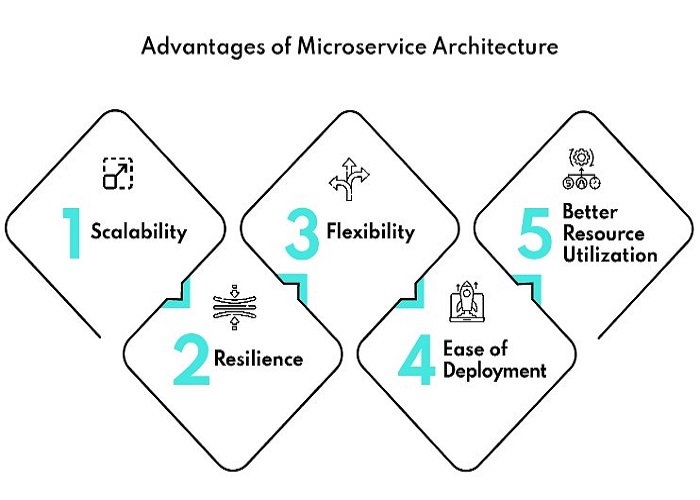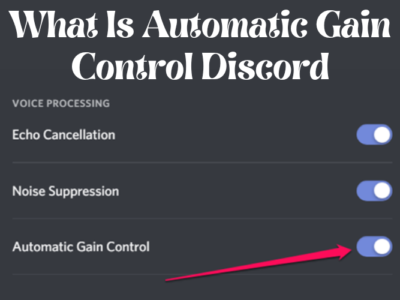Mobile apps are a vital aspect of our everyday life. With the growing number of smartphones and the capabilities they offer, the demand for advanced apps is growing every passing year. To aid developers in building sophisticated applications, the microservice architecture could be utilized. Microservices are a way of structuring software development where individual components are independently deployed and maintained.
This approach is becoming more popular due to its flexibility and scalability, allowing developers to quickly iterate on their applications without having to rewrite them entirely from scratch. In this blog, we’ll discuss the role of microservice architectures in modern mobile applications, as well as some challenges and advantages that come with them.
What is Microservices Architecture?
Microservices architecture is a method of developing software systems as a suite of independently deployable, small, modular services. Each microservice runs a unique process and communicates with other microservices through a lightweight mechanism, such as an HTTP-based API.
This approach enables organizations to develop, deploy, and scale their applications more efficiently and effectively.
Microservices architectures have become increasingly popular in recent years as organizations strive to improve their agility and responsiveness to changes in the market. This approach has numerous benefits, including:
– reduced complexity and improved maintainability
– better utilization of resources
– improved scalability
– increased flexibility
As the market for mobile app development services is in high-demand, you can reach out to multiple companies offering them to boost your business growth.
What is Monolithic Architecture?
Monolithic architecture is a traditional software architecture style in which a single, large application is built as a single unit. In a monolithic architecture, all components of the application, including the user interface, business logic, and data storage, are combined into a single process and deployed together. Some of the key characteristics of monolithic architecture are:
- Centralized data management: All components of the application share a single database, which can lead to tight coupling between components.
- Tight coupling of components: Changes to one component often require changes to other components, leading to a higher risk of regression.
- Single deployment unit: The entire application must be deployed and tested as a single unit, which can be time-consuming and complex.
- Single point of failure: If the monolithic application fails, the entire system goes down.
- Limited scalability: The entire application must be scaled, even if only one component is experiencing heavy usage.
Monolithic architecture is still widely used, particularly in small to medium-sized applications. However, as applications become larger and more complex, monolithic architecture can become unwieldy and difficult to maintain, leading to the popularity of alternative architectural styles such as microservices.
Advantages of Microservice Architecture

Some of the advantages of microservice architecture are:
- Scalability: Microservices can be scaled individually, allowing for more efficient resource usage and better handling of spikes in demand.
- Resilience: By breaking an application into smaller, independent services, microservice architecture can improve the system’s fault tolerance and make it easier to identify and fix issues.
- Flexibility: Teams can work on individual microservices in isolation, using the language and tools that best fit the task, leading to faster development cycles.
- Ease of Deployment: Microservices can be deployed and updated independently, reducing the risk of affecting the entire system during deployment.
- Better Resource Utilization: Because each microservice is a separate component, it can be deployed on the most appropriate infrastructure for its specific needs. You can hire dedicated developers India or an entire team that work exclusively on mobile applications.
- Improved Maintainability: With a well-designed microservice architecture, changes to one microservice are unlikely to affect other parts of the system, making maintenance easier.
Drawbacks of Microservices Architecture
While microservices architecture has many benefits, it also has some drawbacks, including:
- Complexity: With multiple services and communication points, microservices architecture can be complex to set up and maintain, especially for large-scale systems.
- Debugging difficulties: Debugging issues in a microservice’s environment can be challenging, as topics may span multiple services and require coordination across various teams.
- Increased operational overhead: With multiple services, there is a need for improved infrastructure and operations support, including deployment, monitoring, and management.
- Internal communication: Internal communication can become a bottleneck, especially in cases where services need to exchange large amounts of data in real time.
How Microservices Are Profitable To Businesses?
Microservices can provide many advantages to businesses that include:
- Time-to-market: By breaking complicated applications into smaller, distinct services, teams can create and release new features much faster.
- Greater agility: The ability to independently update microservices helps businesses adapt to changes in market conditions and the needs of customers more efficiently.
- Better scalability: Microservices can be scaled individually, allowing businesses to meet increasing demand and avoid over provisioning resources. You can boost scalability of your business by consulting a reputed mobile app development company.
- Improved reliability: The modular design of microservices makes it easier to identify and fix issues, improving the overall reliability of the application.
- Enhanced customer experience: By breaking down complex applications into smaller, more manageable components, businesses can improve the user experience by reducing latency and increasing the system’s reliability.
- Cost-effective: The modular design of microservices makes it easier to reuse components, reducing the costs associated with developing and maintaining software applications.
Applications of Microservices
Microservices architecture is well-suited for a wide range of use cases, including:
- E-commerce: An e-commerce platform can be decomposed into microservices for catalog management, shopping cart management, order management, and payment processing.
- Banking: A banking application can be decomposed into microservices for customer management, loan management, and fraud detection.
- Healthcare: A healthcare application can be decomposed into microservices for patient management, appointment scheduling, and electronic health records.
- Logistics: A logistics platform can be decomposed into microservices for shipment tracking, route optimization, and delivery management. To develop top-notch logistics applications, you can partner with a development company offering the best android app development services to their clients.
- Social media: A social media platform can be decomposed into microservices for user management, content management, and advertising management.
- IoT: An IoT platform can be decomposed into microservices for device management, data processing, and analytics.
These are just a few examples, and the specific use cases for microservices will depend on each organization’s needs and the application’s particular requirements.
Real Examples of Microservices Implementation
Many well-known organizations have implemented microservices architecture, including:
- Netflix: Netflix was one of the early adopters of microservices and has become a leading example of how microservices can be used to build large-scale, highly scalable applications.
- Amazon: Amazon has many microservices that handle different aspects of its e-commerce platform, from order management to product recommendations.
- Uber: Uber uses microservices to build its ride-hailing platform, with separate services for ride-matching, payment processing, and driver management.
In A Nutshell
It is evident by the above pointers that microservices help big and small companies achieve the agility and scalability they require and develop new technology capabilities to keep up with the ever-growing demand of customers. It will be smart to invest your time, money, and effort into microservices design patterns rather than traditional ones. If you want to develop modern mobile applications, you can consult a renowned mobile app development company to get the top-notch apps developed.











Comments